
Parts of a mill



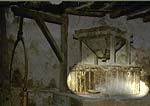
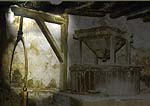
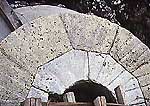
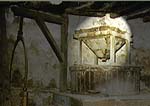
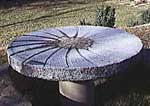

Both stones are encapsulated by the guardapolvo (stonecase) to avoid flour escaping in all directions. The guardapolvo, being circular in most cases, is sometimes octogonal (f.e. Yésero, Ainielle).
The upper stone (weight about 1000 kilos) made more than 100 revolutions a minute.
Fine tuning the balance of the whole construction was important.
Nowadays piedras are recycled as picnic-tables
(Sarvisé, Allué).
|
The Engine The Powersource The Workplace: harinero, aceitero, batán |

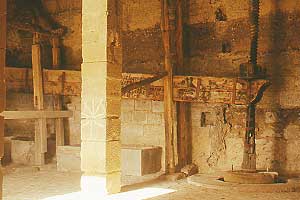
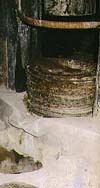
An oversized screw (caracol), moved by man-power, forced the lever down, leaving the poor olives no alternative but give up the precious liquid. The application of hot water made them so much the more co-operative.
The water-oil mixture was captured in a stone reservoir, called pila. Overflow from pila to pila purified the oil in few steps. The crust left between the mats served as a combustible or as fodder.
Some mills were equipped with a more modern space-saving (steel) press lacking the lever (e.g. Troncedo, Almazorre, Mipanas). Find more pictures of caracol and estera in Coscojuela and Trillo.
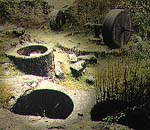
| The Engine The Powersource The Workplace: harinero, aceitero, batán |
They had a vertical wheel, because that made the construction easier and the functioning more straightforward.
The last batán (Lacort) functioned until the early 1970s.
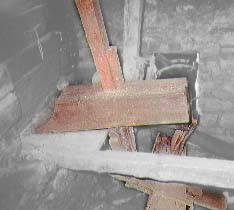
|
The Engine The Powersource The Workplace: harinero, aceitero, batán |